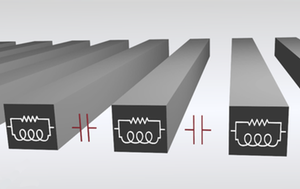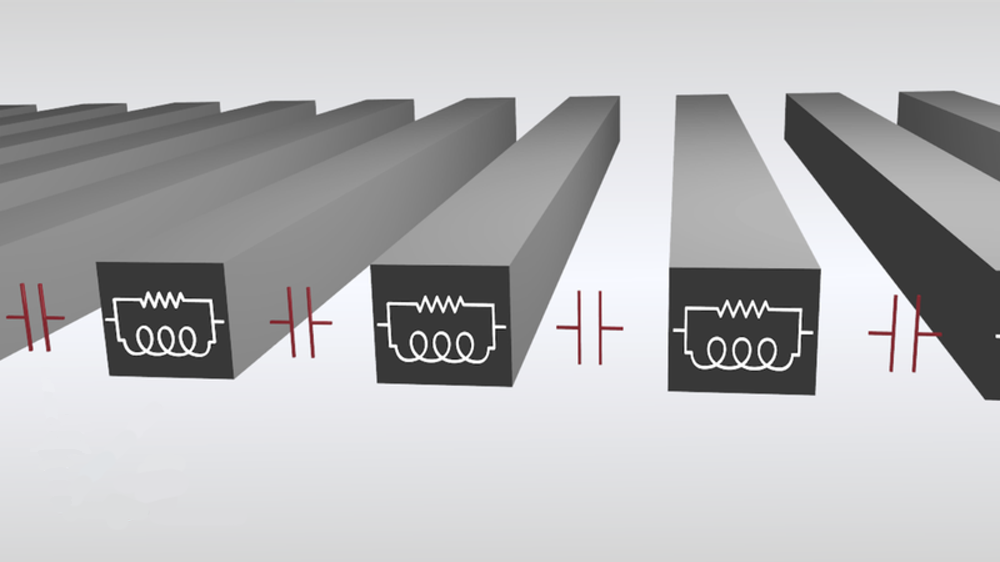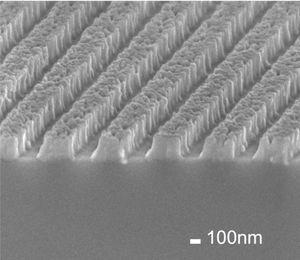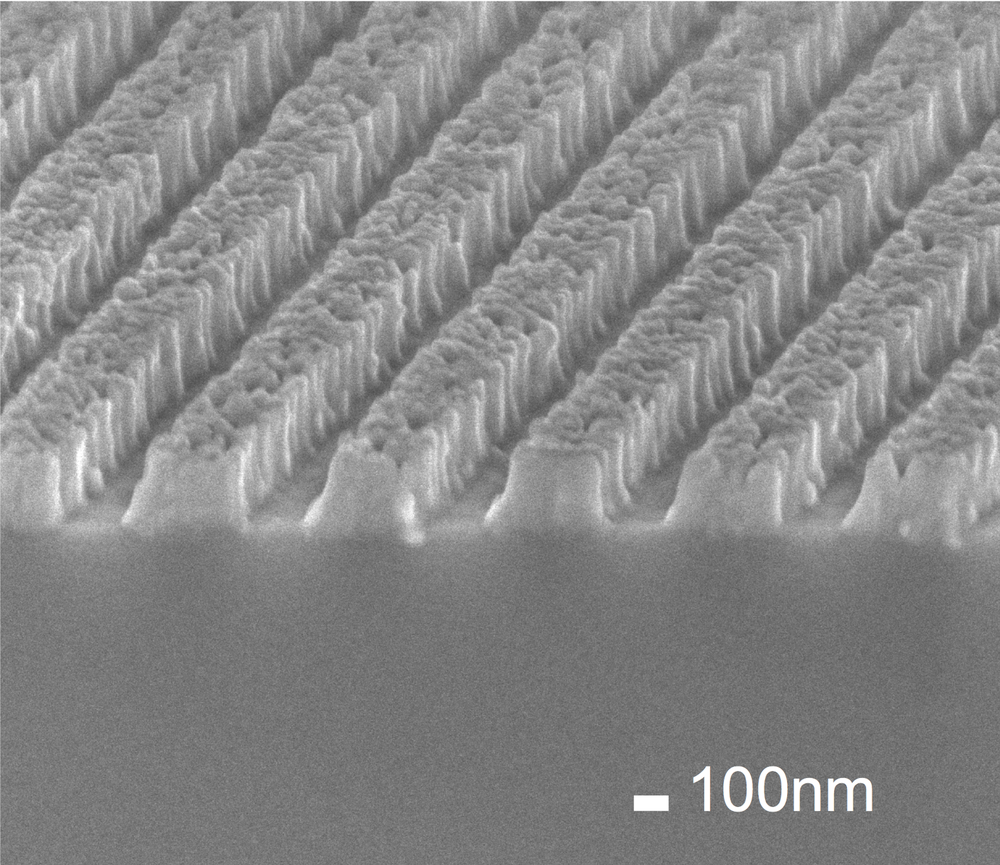Circuits for Light
Nanoscale structures called metatronic circuits process light waves the way conventional circuit elements process electric currents, but metatronics could be made much smaller and faster than conventional electronics. Now a team reporting in Physical Review Letters has built the first metatronic circuit elements that work for near-infrared light, the wavelength range of fiber optics and other silicon-based technology. The team’s findings could lead to ultrafast, light-based information processing fully integrated with a wide range of high-tech devices.
To continue the trend toward smaller and faster information processing circuits, researchers may soon need to harness light as the information carrier, replacing electric currents. To create circuit elements for light waves, Nader Engheta of the University of Pennsylvania and his colleagues are turning to a class of structures known as metamaterials, which have light-manipulating properties not found in naturally occurring materials.
Last year Engheta’s research group used silicon nitride to create the first metamaterial circuit elements [1]. Their circuitry processed light in the mid-infrared range, with wavelengths of to micrometers. Their structure consisted of an array of parallel nanorods, which are long blocks a few hundred nanometers wide, separated by air gaps and arranged horizontally. Illuminated from above, the rods and air gaps respond to the light’s fast-oscillating electric field in ways similar to inductors and capacitors responding to a more slowly oscillating voltage in a conventional circuit.
Inductors and capacitors change the timing and amplitude of an oscillating voltage in a way that varies with frequency, and the strength of their effects depends in part on their shapes. A conventional array of these circuit elements can act as a “band-stop” filter that blocks transmission of voltage signals within a limited frequency range or as a “bandpass” filter that allows only a certain frequency range through. Similarly, the rods and gaps in the “metatronic” circuit can partially block or transmit a range of wavelengths of light, depending on the orientation of the light’s electric field and other factors. The central wavelength and width of the affected range depend on the width and height of the rods. Similar filters are essential to information processing techniques such as multiplexing, which allows an optical fiber to carry many streams of data, each with a slightly different wavelength. But a more long-term goal is to design new light-processing circuits using optical capacitors, inductors, and perhaps other elements.
While the silicon nitride structures worked for mid-infrared light, they were unable to filter shorter-wavelength (and thus higher-frequency) light in the near-infrared range. This range includes micrometers, the wavelength at which most telecommunications optical fibers operate.
So Engheta and his colleagues have now made band-stop and bandpass filters from indium tin oxide, which has the right properties in the near-infrared range. The researchers also discovered new ways to vary the wavelength range and central wavelength of the filters, beyond simply changing the shape and spacing of the nanorods. They added nickel chromium on top of the rods or lead sulfide in the gaps to alter the structure’s inductance or capacitance and thus shift the band toward shorter or longer wavelengths. Engheta believes techniques like these may allow future engineers to design metatronic circuits to order. “I am optimistic that in the near future, we’ll be able to customize this,” he says.
“This paper represents a major step forward along the technological road map,” says electrical engineer George Eleftheriades of the University of Toronto. “We see here the evolution of ‘metatronics’ from an abstract theoretical concept to an actual technology.” He says that integrating optical circuitry with telecommunications fibers and other photonic devices is a major goal for designers of photonic information processing technology. But before that happens, we still need an optical transistor, which Eleftheriades says is currently “the key missing element.”
–Gabriel Popkin
Gabriel Popkin is a freelance science writer in Washington, DC.
References
- Y. Sun, B. Edwards, A. Alù, and N. Engheta, “Experimental Realization of Optical Lumped Nanocircuits at Infrared Wavelengths,” Nature Mater. 11, 208 (2012)







